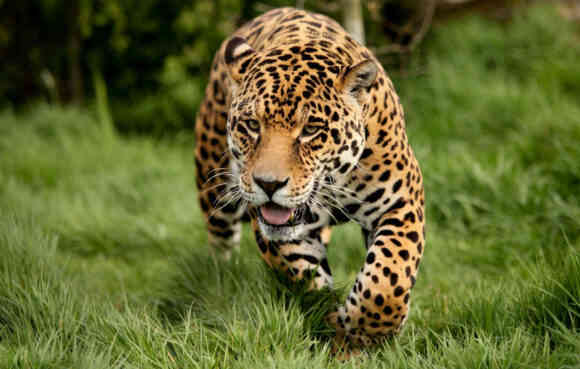Graceful, swift, strong, intelligent — they are all leopards. These huge spotted cats, living in hot countries — perfect predators. At rest, they can spend hours basking in the shade or, conversely, basking in the sun, but a purposeful or simply hungry leopard is a terrible, all-destroying force.
Interesting facts about leopards
- The word “leopard” has appeared since the 18th century, and in earlier sources, animals of this species were called “leontopardos”.
- Leopard, panther and leopard are one and the same species of animals, only of different colors.
- Western Europeans borrowed the word “leopard” from the Latin language, where leo means “lion” and pardus translates as “leopard”.
- Scientists have found that leopards come from Asia – the latest findings suggest that the species originated there, and then the animals moved to Africa and settled throughout the continent.
- The distant ancestors of the leopard separated from their progenitor more than 10 million years back. The first direct ancestor of the leopards that inhabit the Earth today arose on the planet about 7 million years later.
- Leopards are big cats, but they are inferior in size to both lions and tigers (interesting facts about tigers).
- The tail of a leopard in length reaches half the size of the body of this predator.
- The height at the withers of the smallest females is only 45 cm.
- Adult leopards, like most other large cats, have 3 dozen teeth.
- The long tongue of this predator has hard bumps on both sides, allowing the predator to separate the meat of its prey from the bones. They also help leopards “wash themselves”.
- The largest spots on a leopard skin are 50 to 65 mm in diameter.
- Black panthers are usually called large cats with melanism, that is, having a much darker color than their relatives. Most panthers are leopards, but their skins are so dark that the spots are almost invisible (interesting facts about the black panther).
- The location of the spots on the skin is unique for each leopard, that is, they can be used for identification animal – no worse than human fingerprints.
- The main function of the spotted skin of leopards is to disguise predators during hunting.
- On the Malay Peninsula, more than half of all leopards have a black skin – in other parts of the world, the prevalence of animals with this color is much lower.
- Leopards have very sharp and strongly curved claws – their length on the front paws reaches 55 mm.
- In natural conditions, leopards live 10-11 years, and in captivity they live up to 21 years.
- In terms of prevalence in different parts of the globe, the leopard is one of the leaders among cats, second only to domestic cats. They owe such an extensive habitat to their ability to hide well and the ability to hunt a wide variety of animals (interesting facts about cats).
- In the middle of the 20th century, hybrids of leopards and lionesses, which were called leopons, were specially bred in Japanese, German and Italian zoos. It is also known about the crossing of leopards with jaguars and cougars, resulting in jagopards and pumapards.
- The area of land needed by one leopard for life and hunting varies from 8 to 400 square kilometers.
- Leopards are able to successfully hunt animals weighing up to 900 kg.
